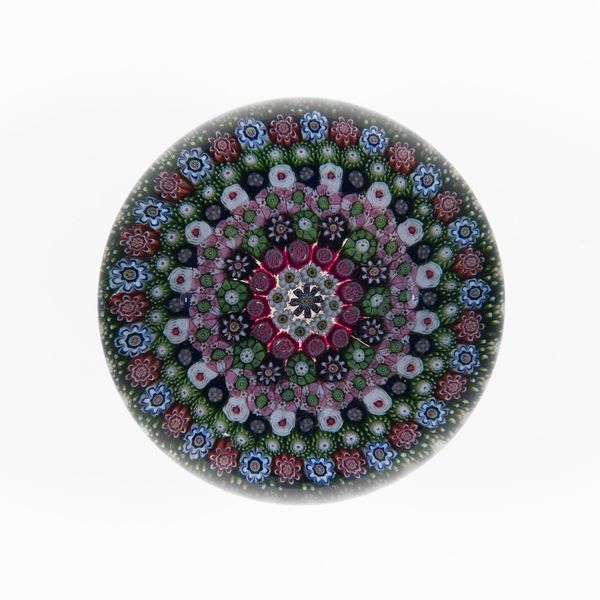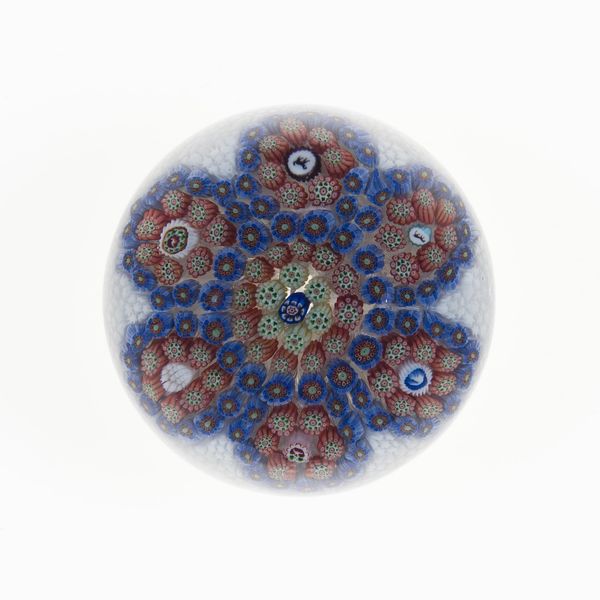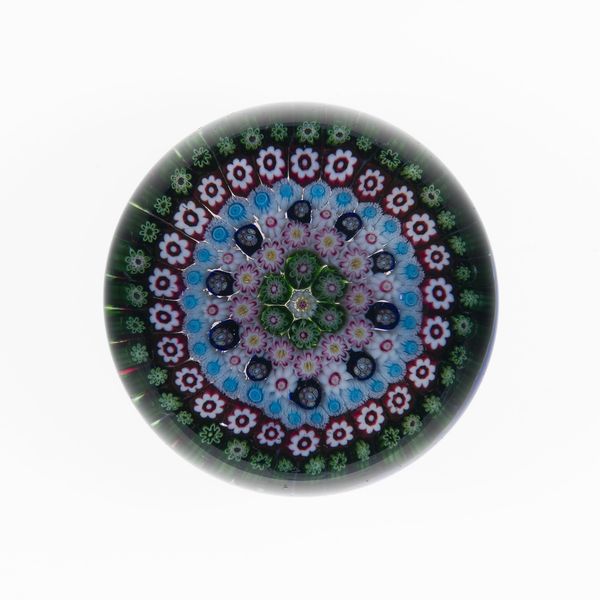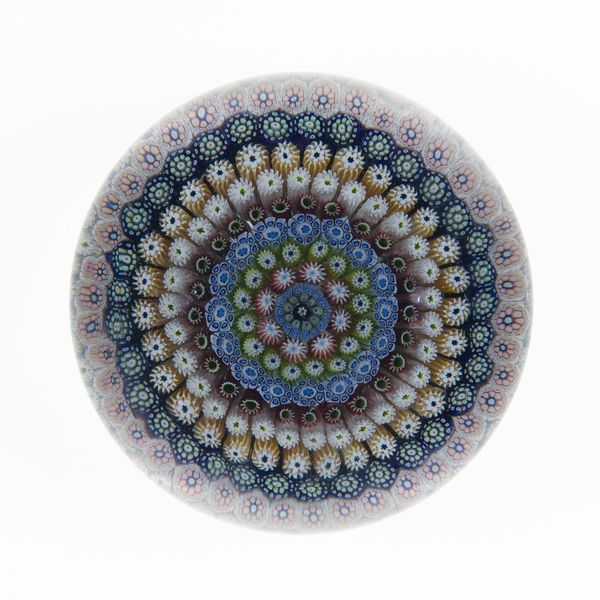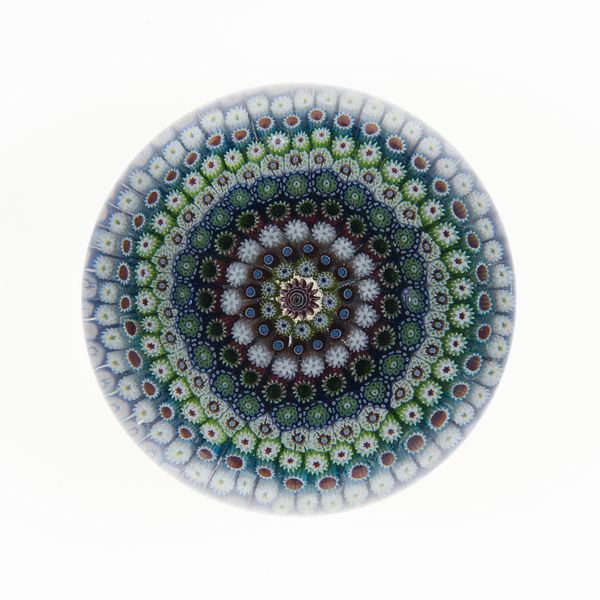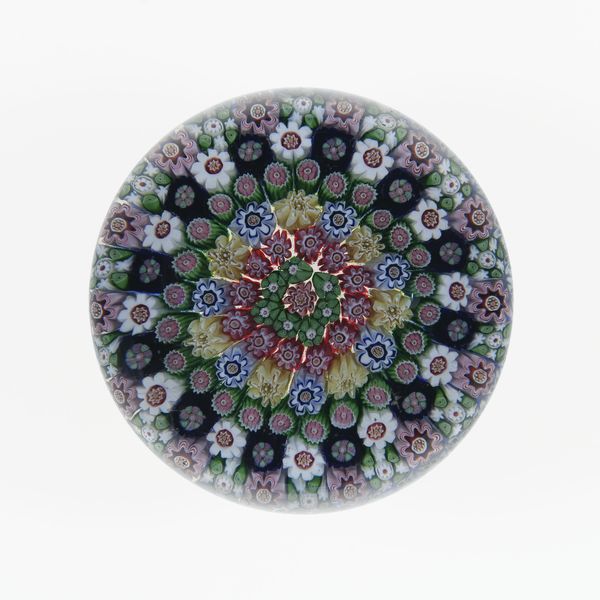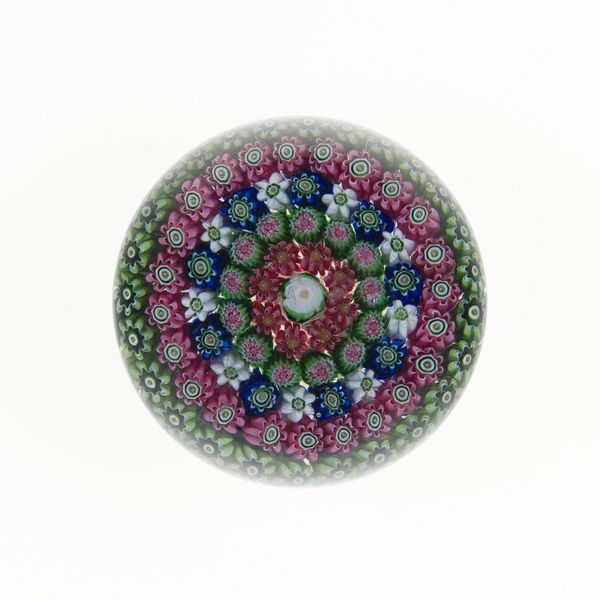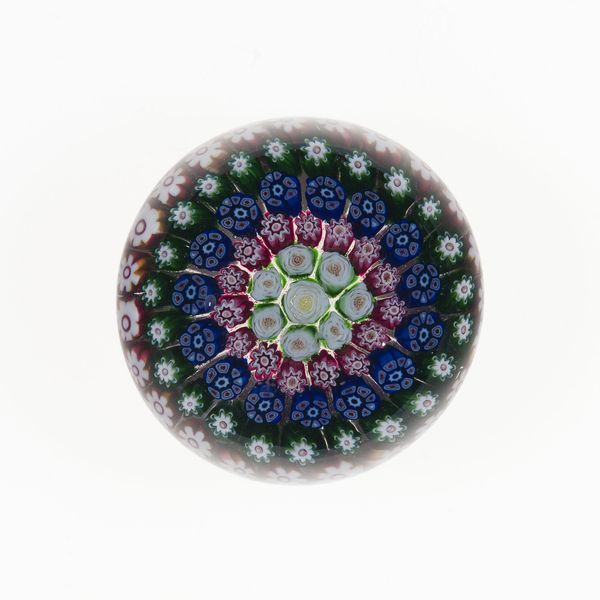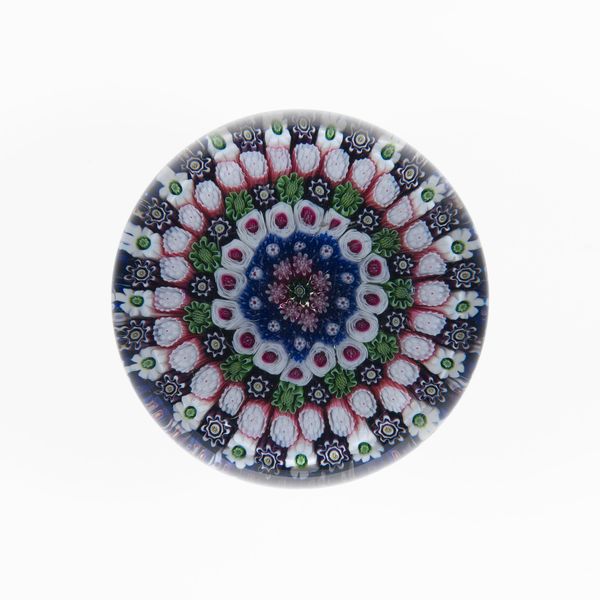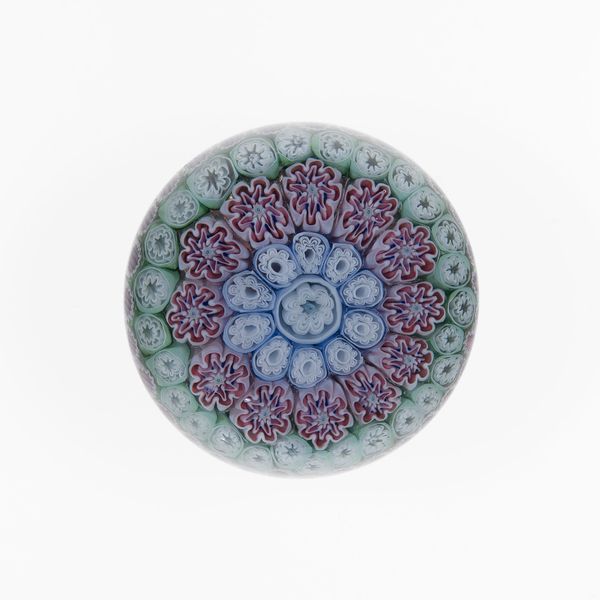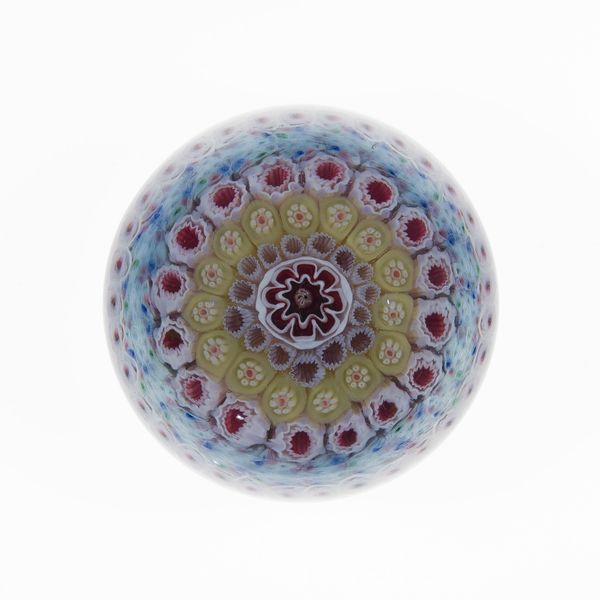
Dimensions: Diam. 5.7 cm (2 1/4 in.)
Copyright: Public Domain
Editor: This glass paperweight, made around the 1840s by the Compagnie de Saint Louis, has a hypnotically symmetrical floral pattern. The dense layering of colors and shapes is captivating. What sort of visual language is at play here? Curator: Look at how these patterns are constructed: tightly packed, concentric circles emanating from a central blossom. Consider the paperweight itself, its form suggesting containment and preservation. This is visual order imposed on the chaos of individual elements, like a garden carefully cultivated, or even a miniature cosmos. Editor: So, the flowers aren't just flowers; they represent something more? Curator: Indeed. Think of floral motifs throughout history; they're rarely *just* decoration. They’re often symbolic of prosperity, beauty, even transient life itself. How does the art nouveau style—which celebrated organic forms and elaborate ornamentation—alter or add to our reading of it? Editor: I hadn't thought about that. I guess the delicate glass further emphasizes the fragility theme. And the way it magnifies…almost traps the image... Curator: Precisely! The paperweight performs a type of ritual; do you agree it elevates this humble pattern into something precious and worthy of contemplation, holding memories? In this context, what does this paperweight then become? Editor: A symbol of holding onto moments, a cultural snapshot preserved in glass. Thank you! Curator: My pleasure. I leave the paperweight richer than I picked it up.
Comments
No comments
Be the first to comment and join the conversation on the ultimate creative platform.
